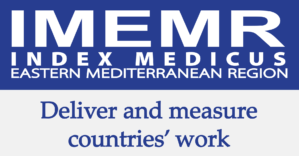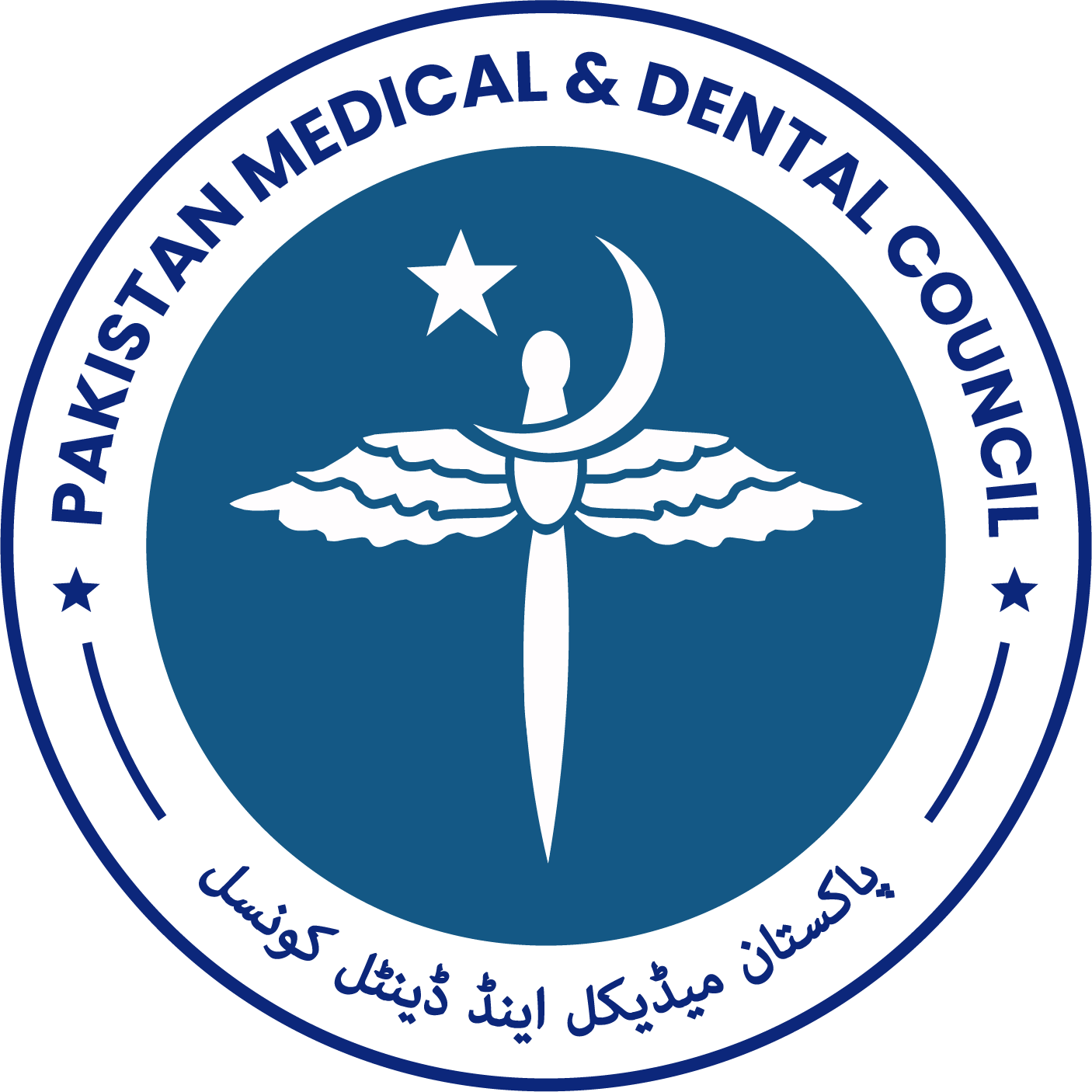Appraisal of Eating Disorders in Females of Reproductive Age by Using Scoff Questionnaire
DOI:
https://doi.org/10.53685/jshmdc.v4i1.141Keywords:
Eating disorders, obesity, SCOFF, ScreeningAbstract
Background: Unhealthy, jumbled eating habits and irregular eating behavior, often associated with body image and weight concerns, are known as abnormal eating behaviors. Anorexia nervosa, bulimia nervosa, and binge eating disorders are common disordered eating behaviors. Females are more likely than males to experience eating disorders.
Objective: The research was conducted to determine the frequency of eating disorders in women of reproductive age group and identify the factors associated with it.
Methods: It was a cross-sectional study carried out at Central Park Medical College, Lahore. Non-probability convenient sampling technique was used to collect data from 196 females of the reproductive age group (15-49 years) using the Scoff Questionnaire. Binary logistic regression was applied to observe the association of eating disorders with non-communicable diseases (NCDs). SPSS version 26 was used for data analysis.
Results: About 82.8% of the females belonged to urban areas and out of those 44.5% had an eating disorder. Binary logistic regression analysis indicated that the odds of developing eating disorders were 85% high for obese women. Approximately 12.6% of the females agreed or strongly agreed that they overeat. Overeating was observed as a statistically significant associated factor with eating disorder (p value=0.048).
Conclusion: Approximately 45.5% of the females were identified as either having anorexia nervosa or bulimia. Females living in cities and nuclear family systems had a higher percentage of eating disorders.
References
Kessler RC, Berglund PA, Chiu WT, Deitz AC, Hudson JI, Shahly V, et al. The frequency and correlates of binge eating disorder in the World Health Organization World Mental Health Surveys. Biol Psychiatry. 2013; 73(9): 904-914. doi:10.1016 /j.biopsych.2012.11.020 DOI: https://doi.org/10.1016/j.biopsych.2012.11.020
McCuen-Wurst C, Ruggieri M, Allison KC. Disordered eating and obesity: associations between binge-eating disorder, night-eating syndrome, and weight-related comorbidities. Ann N Y Acad Sci. 2018; 1411(1): 96-105. doi:10.1111/nyas. 13467. DOI: https://doi.org/10.1111/nyas.13467
Petre LM. Psychological treatment of binge-eating disorder: a case study. RAIS J Soc Sci. 2019; 3(2): 10-17. doi:10.5281/zendo.35 4 9452.
Qian J, Wu Y, Liu F, Zhu Y, Jin H, Zhang H, et al. An update on the frequency of eating disorders in the general population: a systematic review and meta-analysis. Eat Weight Disord. 2022; 27(2): 415-428. doi:10. 1007/s40519-021-01162-z. DOI: https://doi.org/10.1007/s40519-021-01162-z
Fauconnier M, Rousselet M, Brunault P, Thiabaud E, Lambert S, Rocher B, et al. Food addiction among female patients seeking treatment for an eating disorder: prevalence and associated Factors. Nutrients. 2020; 12(6):1897. doi:10.3390/n1 20618976. DOI: https://doi.org/10.3390/nu12061897
Morgan JF, Reid F, Lacey JH. The SCOFF questionnaire: assessment of a new screening tool for eating disorders. BMJ. 1999; 319(7223): 1467-1468. doi:10.1136/b mj.319.7223.14677. DOI: https://doi.org/10.1136/bmj.319.7223.1467
Muazzam A, Khalid R. Disordered eating behaviors: An overview of Asian cultures. J Pak Psychiatr Soc. 2008; 5(2): 76-80.
Memon AA, Adil SE, Siddiqui EU, Naeem SS, Ali SA, Mehmood K. Eating disorders in medical students of Karachi, Pakistan-a cross-sectional study. BMC Res Notes. 2012; 5: 84. doi 10.1186/1756-0500-5-849. DOI: https://doi.org/10.1186/1756-0500-5-84
Kutz AM, Marsh AG, Gunderson CG, Maguen S, Masheb RM. Eating disorder screening: a systematic review and meta-analysis of diagnostic test characteristics of the SCOFF. J Gen Intern Med. 2020; 35(3): 885-893. doi:10.1007/s11606-019-05478-6. DOI: https://doi.org/10.1007/s11606-019-05478-6
Galmiche M, Déchelotte P, Lambert G, Tavolacci MP. Frequency of eating disorders over the 2000-2018 period: a systematic literature review. Am J Clin Nutr. 2019; 109(5): 1402-1413. doi:10.1093/ajcn/n q34211. DOI: https://doi.org/10.1093/ajcn/nqy342
Kazén M, Baumann N, Twenhöfel JF, Kuhl J. When do anorexic patients perceive their bodies as too fat? Aggravating and ameliorating factors. PLoS One. 2019; 14(2): e0212612. doi:10.1371/journal.pone.0212612. DOI: https://doi.org/10.1371/journal.pone.0212612
Bénard M, Bellisle F, Kesse-Guyot E, Julia C, Andreeva VA, Etilé F, et al. Impulsivity is associated with food intake, snacking, and eating disorders in the general population. Am J Clin Nutr. 2019; 109(1): 117-126. doi:10. 1093/ajcn/nqy255. DOI: https://doi.org/10.1093/ajcn/nqy255
Hudson JI, Hiripi E, Pope HG Jr, Kessler RC. The prevalence and correlates of eating disorders in the National Comorbidity Survey Replication. Biol Psychiatry. 2007; 61(3): 348-58. doi:10.1016/j.biopsych.2006.0 3.040. DOI: https://doi.org/10.1016/j.biopsych.2006.03.040
Jamali YA, Memon SF, Lagahri ZA, Shaikh SA, Warsi J, Arain AA. Prevalence of eating disorders among students of Quest University, Nawabshah, Pakistan. Merit Res J Med Med Sci. 2020; 8(4): 81-84. doi:10.5 281/zenodo.3764134
Zahra SM, Jha RP, Safdar M, Khalid MZ, Khalid W, Ranjha MM. Trends in the burden of eating disorders in Pakistan over the past three decades: A join point regression analysis. Ann Indian Psychiatry. 2022; 22(22); 1-12. doi:10.4103/aip. aip_8_22
Reyes-Rodríguez ML, Franko DL, Matos-Lamourt A, Bulik CM, Von Holle A, Cámara-Fuenteset LR, et al. Eating disorder symptomatology: frequency among Latino college freshmen students. J Clin Psychol. 2010; 66(6):666-679. doi10.1002/jclp.20684 DOI: https://doi.org/10.1002/jclp.20684
Bizri M, Geagea L, Kobeissy F, Talih F. Frequency of Eating Disorders Among Medical Students in a Lebanese Medical School: A Cross-Sectional Study. Neuropsychiatr Dis Treat. 2020; 16: 1879-1887. doi:10.2147/NDT.S266241. DOI: https://doi.org/10.2147/NDT.S266241
Preti A, Pinna C, Nocco S, Pilia S, Mulliri E, Micheli V, et al. Rural/urban differences in the distribution of eating disorder symptoms among adolescents from community samples. Aust N Z J Psychiatry. 2007; 41(6): 525-535. doi:10.1080/0004867 0701332292. DOI: https://doi.org/10.1080/00048670701332292
Fawzi MM, Hashim HM, Fouad AA, Abdel-Fattah NR. Prevalence of eating disorders in a sample of rural and urban secondary school-girls in Sharkia, Egypt. Curr Psychiatry. 2010; 17: 1-2.
Papelbaum M, Moreira OR, Coutinho W.F, Kupfer R, Freitas S, Luz RR, et al. Does binge eating matter for glycemic control in type 2 diabetes patients?. J Eat Disord. 2019; 7:30. doi:10.1186/s40337-019-0260-4. DOI: https://doi.org/10.1186/s40337-019-0260-4
Shaikh MA, Kayani A. Detection of eating disorders in 16-20-year-old female students-perspective from Islamabad, Pakistan. J Pak Med Assoc. 2014; 64(3): 334-336.
Lichtenstein MB, Hemmingsen SD, Støving RK. Identification of eating disorder symptoms in Danish adolescents with the SCOFF questionnaire. Nord J Psychiatry. 2017; 71(5): 340-347. doi:10.1080/08039488. 2017.1300322. DOI: https://doi.org/10.1080/08039488.2017.1300322
Tavolacci MP, Gillibert A, Zhu Soubise A, Grigioni S, Déchelotte P. Screening four broad categories of eating disorders: suitability of a clinical algorithm adapted from the SCOFF questionnaire. BMC Psychiatry. 2019; 19(1): 366. doi10.1186/s12 888-019-2338-23 46. DOI: https://doi.org/10.1186/s12888-019-2338-6
Downloads
Published
How to Cite
Issue
Section
License
Copyright (c) 2023 Shamaila Hassnain, Tahseen Kazmi, Noor Shahid, Shehnaz Khan

This work is licensed under a Creative Commons Attribution-NonCommercial 4.0 International License.
You are free to:
- Share — copy and redistribute the material in any medium or format
- Adapt — remix, transform, and build upon the material
- The licensor cannot revoke these freedoms as long as you follow the license terms.
Under the following terms:
-
Attribution — You must give appropriate credit, provide a link to the license, and indicate if changes were made. You may do so in any reasonable manner, but not in any way that suggests the licensor endorses you or your use.
-
Non Commercial — You may not use the material for commercial purposes.
-
No additional restrictions — You may not apply legal terms or technological measures that legally restrict others from doing anything the license permits.




















